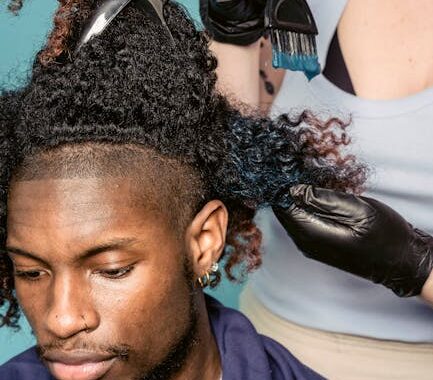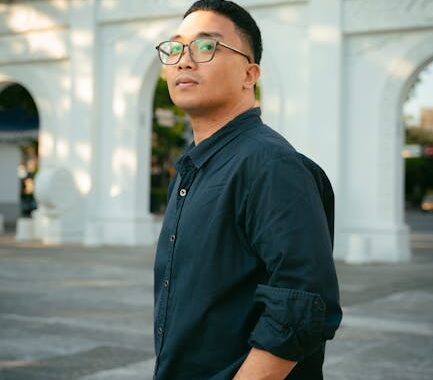Asian Undercut Hairstyles: A Comprehensive Guide to Styles and Trends
The Asian undercut hairstyle has exploded in popularity, becoming a versatile and stylish choice for men and women across Asia and beyond. This guide delves into the diverse world of Asian undercut styles, exploring various techniques, trends, and considerations for choosing the perfect undercut to complement your unique features and personal style. Understanding the nuances of this haircut is key to achieving a look that’s both fashionable and flattering.
Understanding the Asian Undercut
The Asian undercut, at its core, involves shaving or closely trimming the hair on the sides and back of the head, while leaving the top longer. This contrast creates a dynamic and visually interesting silhouette. However, the beauty of the Asian undercut lies in its adaptability. It can be tailored to suit a wide array of face shapes, hair textures, and personal preferences. From sleek and polished to edgy and textured, the possibilities are nearly limitless. The style often incorporates elements inspired by traditional Asian hairstyles, resulting in a unique blend of modern and cultural influences.
Variations of the Asian Undercut
The versatility of the Asian undercut is demonstrated by its myriad variations. Some popular styles include:
- The Classic Undercut: This involves a sharp contrast between the short sides and the longer top. The top can be styled in various ways, from a simple comb-over to a textured quiff. This is a foundational style from which many others evolve.
- The High Fade Undercut: This takes the contrast further, blending the short sides seamlessly into the longer top hair. The fade can be high, mid, or low, offering different degrees of boldness.
- The Low Fade Undercut: A more subtle approach, the low fade offers a less dramatic contrast, ideal for those seeking a more conservative yet stylish look. [See also: Related Article Titles: Low Fade Hairstyles for Men]
- The Textured Undercut: This style emphasizes texture on the top, incorporating various techniques like layering, chopping, or using styling products to create volume and movement. This works especially well with thicker hair types.
- The Pompadour Undercut: A bold and retro-inspired style, the pompadour undercut combines the classic undercut with a voluminous, swept-back top.
- The Side Part Undercut: This incorporates a clean side part, offering a more sophisticated and polished appearance. [See also: Related Article Titles: Best Side Part Hairstyles]
Hair Texture and the Asian Undercut
The success of an Asian undercut heavily depends on hair texture. Straight, wavy, and curly hair all lend themselves to different styles. Individuals with straight hair can achieve clean, sharp lines and precise fades. Wavy hair can create a naturally textured and voluminous top. Curly hair requires careful consideration, often benefiting from techniques that enhance the curl pattern rather than fighting against it. [See also: Related Article Titles: Hairstyles for Curly Hair]
Face Shape and the Asian Undercut
Choosing the right Asian undercut should consider your face shape. A skilled stylist can advise on the best fade height, top length, and overall style to complement your features. For instance, a high fade might be ideal for a round face, while a longer top can balance out a longer face. Consulting with a professional is highly recommended to determine the most flattering style.
Maintaining the Asian Undercut
Maintaining an Asian undercut requires regular upkeep. Frequent trims are essential to keep the fade crisp and the shape defined. The frequency will vary depending on hair growth rate, but generally, a trim every 2-4 weeks is recommended. Styling products, such as pomades, waxes, or gels, are often used to achieve specific looks and maintain the style throughout the day. [See also: Related Article Titles: Best Hair Products for Men]
Styling the Asian Undercut
Styling your Asian undercut can be as simple or elaborate as you desire. A comb, brush, and hair dryer are essential tools. For a sleek look, use a small amount of pomade or gel and comb the hair neatly. For a more textured look, use a styling wax or clay to create separation and volume. Many tutorials are available online to demonstrate various styling techniques for different undercut styles. Experimentation is key to discovering your preferred look. Remember, the goal is to enhance your features and personal style.
Choosing the Right Stylist for Your Asian Undercut
Finding a skilled and experienced stylist is crucial for achieving a successful Asian undercut. Look for stylists with a strong portfolio showcasing various undercut styles, particularly those tailored to Asian hair textures and face shapes. Reviews and recommendations can be valuable resources in finding a reputable stylist. Don’t hesitate to communicate your preferences and concerns clearly to ensure you’re both on the same page regarding the desired outcome.
Asian Undercut Hairstyles: Trends and Future Directions
The Asian undercut continues to evolve, with new trends and variations emerging regularly. The integration of modern techniques with traditional Asian hair styling elements is a fascinating aspect of this ongoing development. We can anticipate even greater diversity and creativity in the future, with stylists pushing boundaries and exploring innovative approaches to this timeless yet ever-changing hairstyle. The versatility of the Asian undercut ensures its continued relevance in the ever-evolving world of men’s and women’s hairstyles.
Conclusion: Embracing the Asian Undercut
The Asian undercut offers a versatile and stylish option for individuals seeking a modern and dynamic haircut. By understanding the various styles, considerations for hair texture and face shape, and proper maintenance techniques, you can achieve a look that complements your individual features and personal style. Remember to consult a skilled stylist to ensure a successful and flattering outcome. The Asian undercut is more than just a haircut—it’s a statement of personal expression and style.


